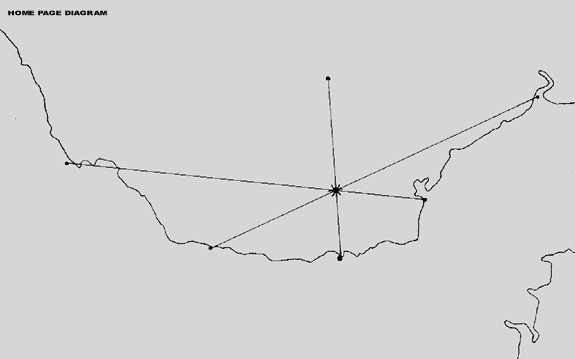
ONCLUSIONS
Why should these early peoples have wanted to position their sites with such accuracy and how were they able to do it? Answers must clearly be speculative. We have evidence in surviving stone structures like Stonehenge of an extremely talented people well acquainted with theoretical astronomy as well as the more practical business of quarrying and erecting 40 ton blocks of limestone. They appear to have been part of a widespread civilisation with similar technologies and constructions stretching all the way from Portugal to the Orkneys. Primitive they were not.
Perhaps there was both a practical and a religious reason for the precision in distances and orientations. In opening up a wooded country it would have been important to drive roadways along which people could move and down which communications could be sent. Would it not have been most sensible to drive these straight and possibly aligned on a hilltop? A straight line would allow people to communicate by sight by means of fire at night or the sun’s reflection or semaphore by day. When the population was small and dispersed it would have been an advantage to have some sure way of communicating swiftly.
That perhaps was the practical reason and if the way could be lit by the midsummer or Mayday sunrise then so much the better. Wherever you were you would then have had a ready reference to the calendar, important in an agricultural community. The religious reasons lay perhaps in a search for order in the scale of things - a kind of early form of town planning. The idea that landscape was there to be improved on - that there was a design which should be complemented only by the careful positioning of man-made features.
While this may explain features such as the ‘East-West’ line between Llandough and Llandow it does not explain why or how anybody might have located Tinkinswood in the first place with such precision and complexity. That secret is still shrouded by the mists of time.

BACK: Home Page and Index